Space Efficiency of Tall Buildings in Singapore
Abstract
1. Introduction
2. Literature Survey
3. Research Method
4. Results
4.1. Key Architectural Design Considerations
4.2. Key Structural Design Considerations
4.3. Space Efficiency of Singaporean Towers
4.4. Relation of Space Efficiency and Key Design Considerations
5. Discussion
6. Conclusions
Author Contributions
Funding
Institutional Review Board Statement
Informed Consent Statement
Data Availability Statement
Conflicts of Interest
Appendix A. Tall Buildings in Singapore
| # | Building Name | Height (m) | # of Stories | Completion Date | Building Form |
|---|---|---|---|---|---|
| 1 | Guoco Tower | 284 | 65 | 2016 | Prismatic |
| 2 | Capita Spring | 276 | 51 | 2021 | Prismatic |
| 3 | Capital Tower | 255 | 52 | 2000 | Free |
| 4 | Altez @ Enggor Street | 250 | 62 | 2014 | Prismatic |
| 5 | One Raffles Quay North Tower | 245 | 50 | 2006 | Prismatic |
| 6 | The Sail @ Marina Bay | 245 | 70 | 2008 | Free |
| 7 | Marina Bay Financial Centre Office Tower II | 245 | 50 | 2010 | Prismatic |
| 8 | Ocean Financial Centre | 245 | 43 | 2011 | Prismatic |
| 9 | Central Boulevard Tower | 245 | 46 | 2024 | Prismatic |
| 10 | CapitaGreen | 242 | 40 | 2014 | Prismatic |
| 11 | Marina Bay Financial Centre Office Tower III | 240 | 46 | 2012 | Prismatic |
| 12 | V on Shenton Residential Tower | 237 | 54 | 2017 | Free |
| 13 | Frasers Tower | 231 | 36 | 2018 | Prismatic |
| 14 | Asia Square Tower 1 | 229 | 43 | 2011 | Prismatic |
| 15 | Marina Bay Suites | 227 | 66 | 2013 | Prismatic |
| 16 | Marina One | 225 | 34 | 2017 | Free |
| 17 | Marina Bay Residences | 222 | 55 | 2010 | Prismatic |
| 18 | Asia Square Tower 2 | 221 | 46 | 2013 | Prismatic |
| 19 | South Beach South Tower | 218 | 45 | 2015 | Free |
| 20 | South Beach North Tower | 218 | 35 | 2015 | Free |
| 21 | Central Park Tower | 215 | 63 | 2008 | Free |
| 22 | One Shenton Tower 1 | 214 | 50 | 2011 | Prismatic |
| 23 | The Orchard Residences | 211 | 56 | 2010 | Prismatic |
| 24 | One Raffles Place Tower 2 | 210 | 38 | 2012 | Prismatic |
| 25 | Marina Bay Sands Hotel Tower 1 | 207 | 57 | 2010 | Prismatic |
| 26 | Marina Bay Sands Hotel Tower 3 | 207 | 57 | 2010 | Prismatic |
| 27 | Marina Bay Sands Hotel Tower 2 | 203 | 57 | 2010 | Prismatic |
| 28 | Oasia Hotel Downtown | 191 | 27 | 2016 | Prismatic |
| 29 | SGX Centre 1 | 187 | 29 | 2000 | Prismatic |
| 30 | SGX Centre 2 | 187 | 29 | 2001 | Prismatic |
| 31 | Marina Bay Financial Centre Office Tower I | 186 | 33 | 2010 | Free |
| 32 | DUO Residences | 186 | 50 | 2018 | Free |
| 33 | 79 Robinson Road | 185 | 29 | 2020 | Prismatic |
| 34 | 18 Robinson | 180 | 28 | 2019 | Free |
| 35 | CanningHill Piers, Southwest Tower | 180 | 48 | UC | Prismatic |
| 36 | DUO Tower | 179 | 39 | 2018 | Free |
| 37 | One Shenton Tower 2 | 178 | 42 | 2011 | Prismatic |
| 38 | Maybank Tower | 175 | 32 | 2002 | Free |
| 39 | Oxley Tower | 174 | 32 | 2016 | Prismatic |
| 40 | Reflections at Keppel Bay Tower 1A | 174 | 40 | 2011 | Free |
| 41 | Reflections at Keppel Bay Tower 2B | 174 | 40 | 2011 | Free |
| 42 | Reflections at Keppel Bay Tower 3B | 174 | 40 | 2011 | Free |
| 43 | Samsung Hub | 172 | 30 | 2005 | Prismatic |
| 44 | Springleaf Tower | 165 | 37 | 2002 | Prismatic |
| 45 | Icon Loft Tower 2 | 163 | 46 | 2007 | Prismatic |
| 46 | The Pinnacle @ Duxton Block 1C | 163 | 51 | 2009 | Prismatic |
| 47 | One Marina Boulevard | 163 | 32 | 2004 | Prismatic |
| 48 | Skyline @ Orchard Boulevard | 162 | 33 | 2015 | Prismatic |
| 49 | New Futura North Tower | 160 | 36 | 2017 | Prismatic |
| 50 | New Futura South Tower | 160 | 36 | 2017 | Prismatic |
| 51 | The Pinnacle@Duxton Block 1A | 160 | 50 | 2009 | Prismatic |
| 52 | The Pinnacle@Duxton Block 1B | 160 | 50 | 2009 | Prismatic |
| 53 | The Pinnacle@Duxton Block 1D | 160 | 50 | 2009 | Prismatic |
| 54 | The Pinnacle@Duxton Block 1E | 160 | 50 | 2009 | Prismatic |
| 55 | The Pinnacle@Duxton Block 1F | 160 | 50 | 2009 | Prismatic |
| 56 | The Pinnacle@Duxton Block 1G | 160 | 50 | 2009 | Prismatic |
| 57 | Scotts Square Scotts Wing | 159 | 43 | 2011 | Prismatic |
| 58 | 76 Shenton Way | 158 | 40 | 2014 | Prismatic |
| 59 | Echelon Tower 1 | 155 | 42 | 2017 | Free |
| 60 | Echelon Tower 2 | 155 | 42 | 2017 | Free |
| 61 | Nouvel 18 at Anderson Road Tower A | 154 | 36 | 2014 | Prismatic |
| 62 | One George Street | 153 | 23 | 2004 | Prismatic |
| 63 | Scotts Tower | 153 | 31 | 2017 | Prismatic |
| Note on abbreviations: “UC” indicates “under construction”. | |||||
Appendix B. Tall Buildings in Singapore by Form, Core Type, Structural System, and Structural Material
| # | Building Name | Function | Core Type | Structural System | Structural Material |
|---|---|---|---|---|---|
| 1 | Guoco Tower | M(R+O) | Central | Outriggered frame | Composite(C+S) |
| 2 | Capita Spring | M(H+O) | Central | Shear-walled frame | Composite(C+S) |
| 3 | Capital Tower | O | Central | Shear-walled frame | Composite |
| 4 | Altez @ Enggor Street | R | Central | Shear-walled frame | Concrete |
| 5 | One Raffles Quay North Tower | O | Central | Outriggered frame | Composite |
| 6 | The Sail @ Marina Bay | R | Central | Shear-walled frame | Concrete |
| 7 | Marina Bay Financial Centre Office Tower II | O | Central | Shear-walled frame | Concrete |
| 8 | Ocean Financial Centre | O | Central | Shear-walled frame | Concrete |
| 9 | Central Boulevard Tower | O | Central | Shear-walled frame | Concrete |
| 10 | CapitaGreen | O | Central | Shear-walled frame | Composite |
| 11 | Marina Bay Financial Centre Office Tower III | O | Central | Outriggered frame | Concrete |
| 12 | V on Shenton Residential Tower | R | Central | Shear-walled frame | Composite(C+S) |
| 13 | Frasers Tower | O | Central | Outriggered frame | Concrete |
| 14 | Asia Square Tower 1 | O | Central | Mega column | Concrete |
| 15 | Marina Bay Suites | R | Peripheral | Shear-walled frame | Concrete |
| 16 | Marina One | O | Central | Outriggered frame | Composite(C+S) |
| 17 | Marina Bay Residences | R | Central | Shear-walled frame | Concrete |
| 18 | Asia Square Tower 2 | M(H+O) | Central | Mega column | Concrete |
| 19 | South Beach South Tower | M(R+H) | Central | Outriggered frame | Concrete |
| 20 | South Beach North Tower | O | Central | Outriggered frame | Concrete |
| 21 | Central Park Tower | R | Central | Shear-walled frame | Concrete |
| 22 | One Shenton Tower 1 | R | Central | Shear-walled frame | Concrete |
| 23 | The Orchard Residences | R | Central | Shear-walled frame | Concrete |
| 24 | One Raffles Place Tower 2 | O | Peripheral | Outriggered frame | Composite(C+S) |
| 25 | Marina Bay Sands Hotel Tower 1 | H | Central | Outriggered frame | Composite(C+S) |
| 26 | Marina Bay Sands Hotel Tower 3 | H | Central | Outriggered frame | Composite(C+S) |
| 27 | Marina Bay Sands Hotel Tower 2 | H | Central | Outriggered frame | Composite(C+S) |
| 28 | Oasia Hotel Downtown | H | Peripheral | Shear-walled frame | Concrete |
| 29 | SGX Centre 1 | O | Peripheral | Shear-walled frame | Composite(C+S) |
| 30 | SGX Centre 2 | O | Peripheral | Shear-walled frame | Composite(C+S) |
| 31 | Marina Bay Financial Centre Office Tower I | O | Central | Mega column | Concrete |
| 32 | DUO Residences | R | Central | Shear-walled frame | Concrete |
| 33 | 79 Robinson Road | O | Central | Shear-walled frame | Concrete |
| 34 | 18 Robinson | O | Peripheral | Shear-walled frame | Composite(C+S) |
| 35 | CanningHill Piers, Southwest Tower | R | Central | Shear-walled frame | Composite(C+S) |
| 36 | DUO Tower | M(H+O) | Central | Shear-walled frame | Concrete |
| 37 | One Shenton Tower 2 | R | Central | Shear-walled frame | Concrete |
| 38 | Maybank Tower | O | Peripheral | Shear-trussed frame | Steel |
| 39 | Oxley Tower | O | Central | Shear-walled frame | Concrete |
| 40 | Reflections at Keppel Bay Tower 1A | R | Peripheral | Shear-walled frame | Concrete |
| 41 | Reflections at Keppel Bay Tower 2B | R | Peripheral | Shear-walled frame | Concrete |
| 42 | Reflections at Keppel Bay Tower 3B | R | Peripheral | Shear-walled frame | Concrete |
| 43 | Samsung Hub | O | Central | Shear-walled frame | Composite(C+S) |
| 44 | Springleaf Tower | M(R+O) | Peripheral | Shear-walled frame | Composite(C+S) |
| 45 | Icon Loft Tower 2 | R | Central | Shear-walled frame | Concrete |
| 46 | The Pinnacle@Duxton Block 1C | R | Central | Shear-walled frame | Concrete |
| 47 | One Marina Boulevard | O | Central | Shear-walled frame | Composite(C+S) |
| 48 | Skyline @ Orchard Boulevard | R | Peripheral | Shear-walled frame | Concrete |
| 49 | New Futura North Tower | R | Central | Shear-walled frame | Concrete |
| 50 | New Futura South Tower | R | Central | Shear-walled frame | Concrete |
| 51 | The Pinnacle@Duxton Block 1A | R | Central | Shear-walled frame | Concrete |
| 52 | The Pinnacle@Duxton Block 1B | R | Central | Shear-walled frame | Concrete |
| 53 | The Pinnacle@Duxton Block 1D | R | Central | Shear-walled frame | Concrete |
| 54 | The Pinnacle@Duxton Block 1E | R | Central | Shear-walled frame | Concrete |
| 55 | The Pinnacle@Duxton Block 1F | R | Central | Shear-walled frame | Concrete |
| 56 | The Pinnacle@Duxton Block 1G | R | Central | Shear-walled frame | Concrete |
| 57 | Scotts Square Scotts Wing | R | Central | Shear-walled frame | Concrete |
| 58 | 76 Shenton Way | R | Peripheral | Shear-walled frame | Concrete |
| 59 | Echelon Tower 1 | R | Central | Shear-walled frame | Concrete |
| 60 | Echelon Tower 2 | R | Central | Shear-walled frame | Concrete |
| 61 | Nouvel 18 at Anderson Road Tower A | R | Central | Shear-walled frame | Concrete |
| 62 | One George Street | O | Central | Shear-walled frame | Concrete |
| 63 | Scotts Tower | R | Central | Shear-walled frame | Composite(C+S) |
| Note on abbreviations: “S” indicates “steel”; “C” indicates “concrete”; “Composite (S+C)” indicates “composite/hybrid” structures combining “steel and concrete”. “M” indicates “mixed-use”; “R” indicates “residential”; “O” indicates “office”; “H” indicates “hotel”. | |||||
Appendix C. Space Efficiency and Core/GFA of Tall Buildings in Singapore
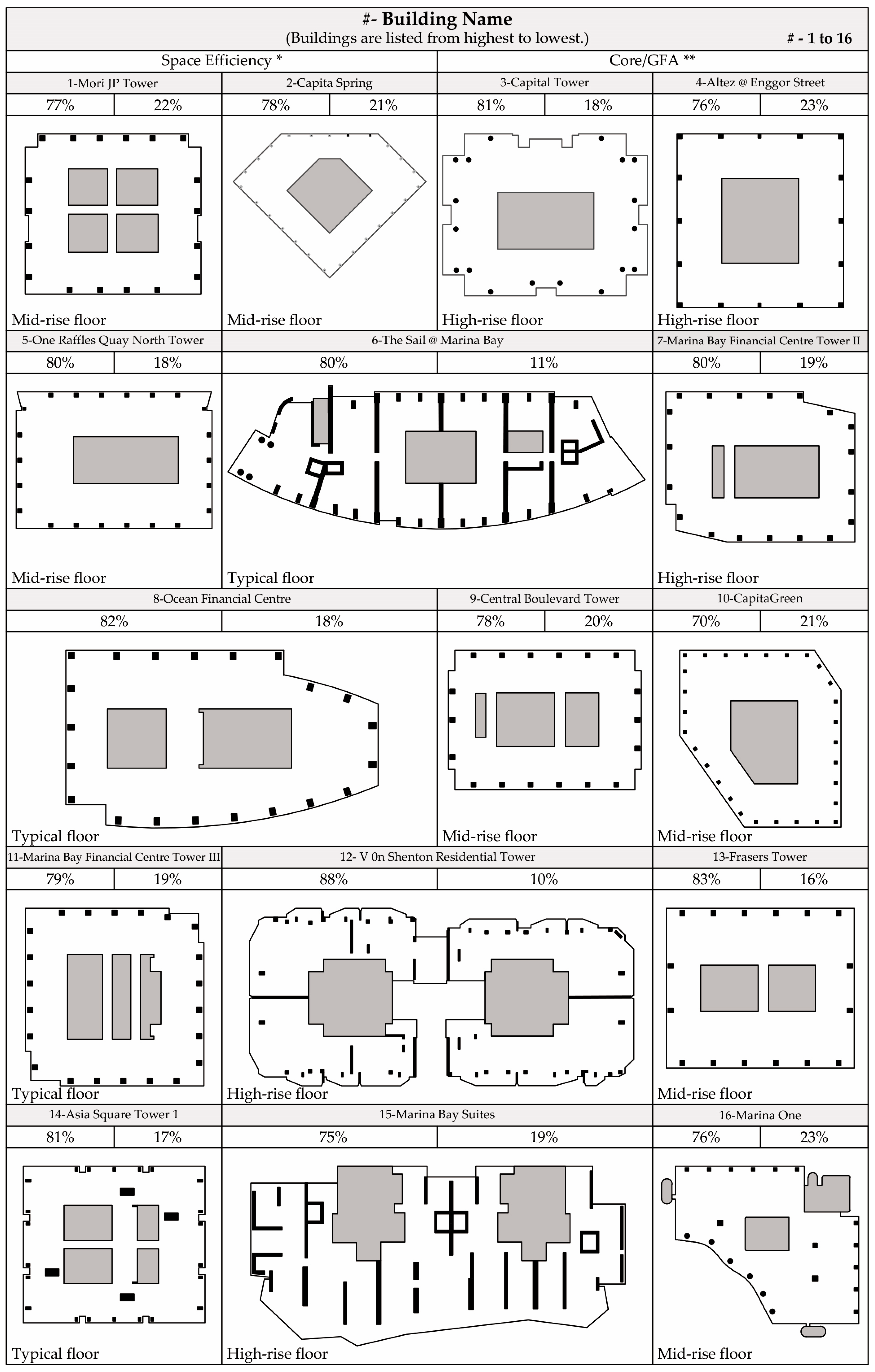
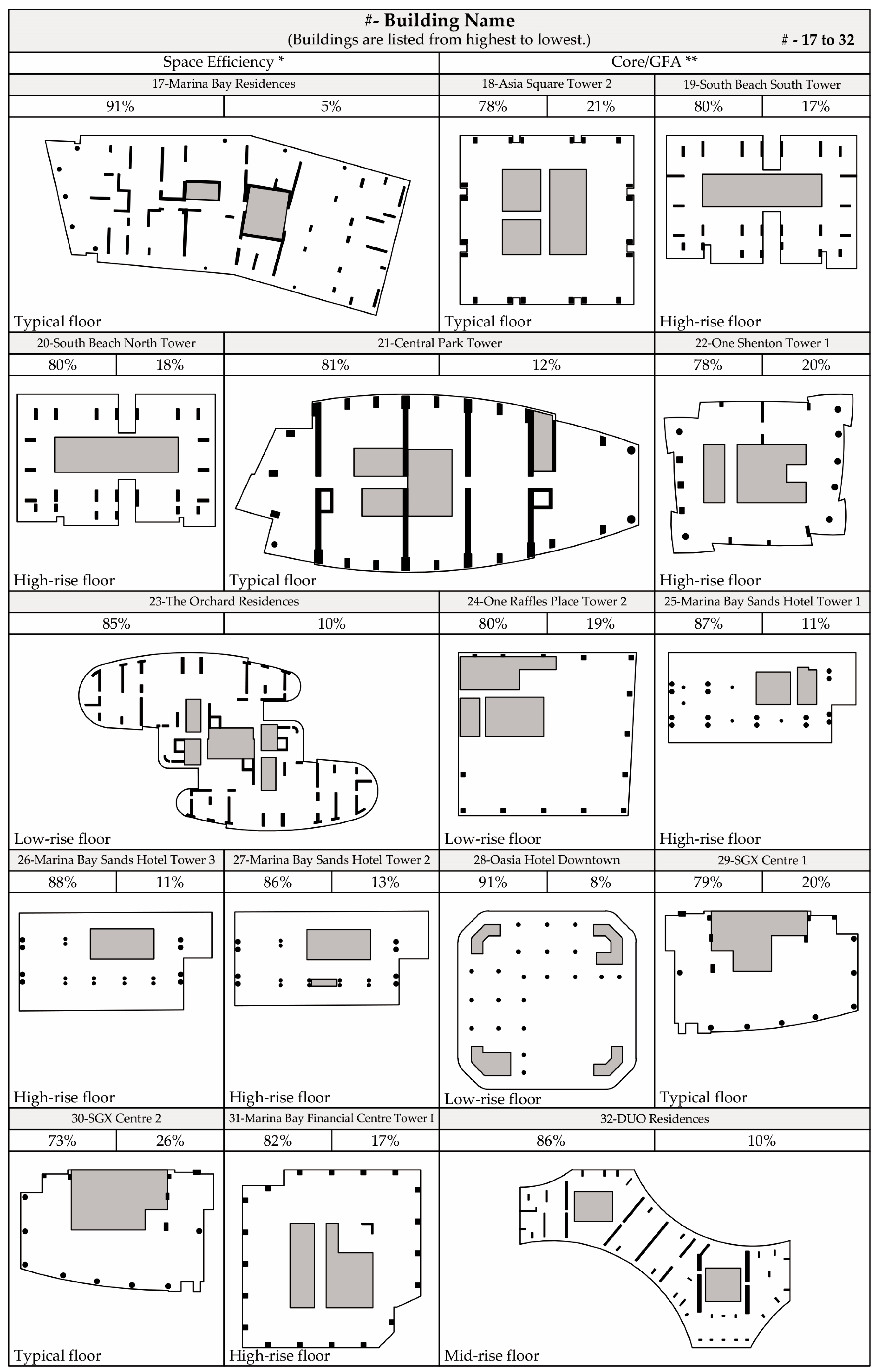
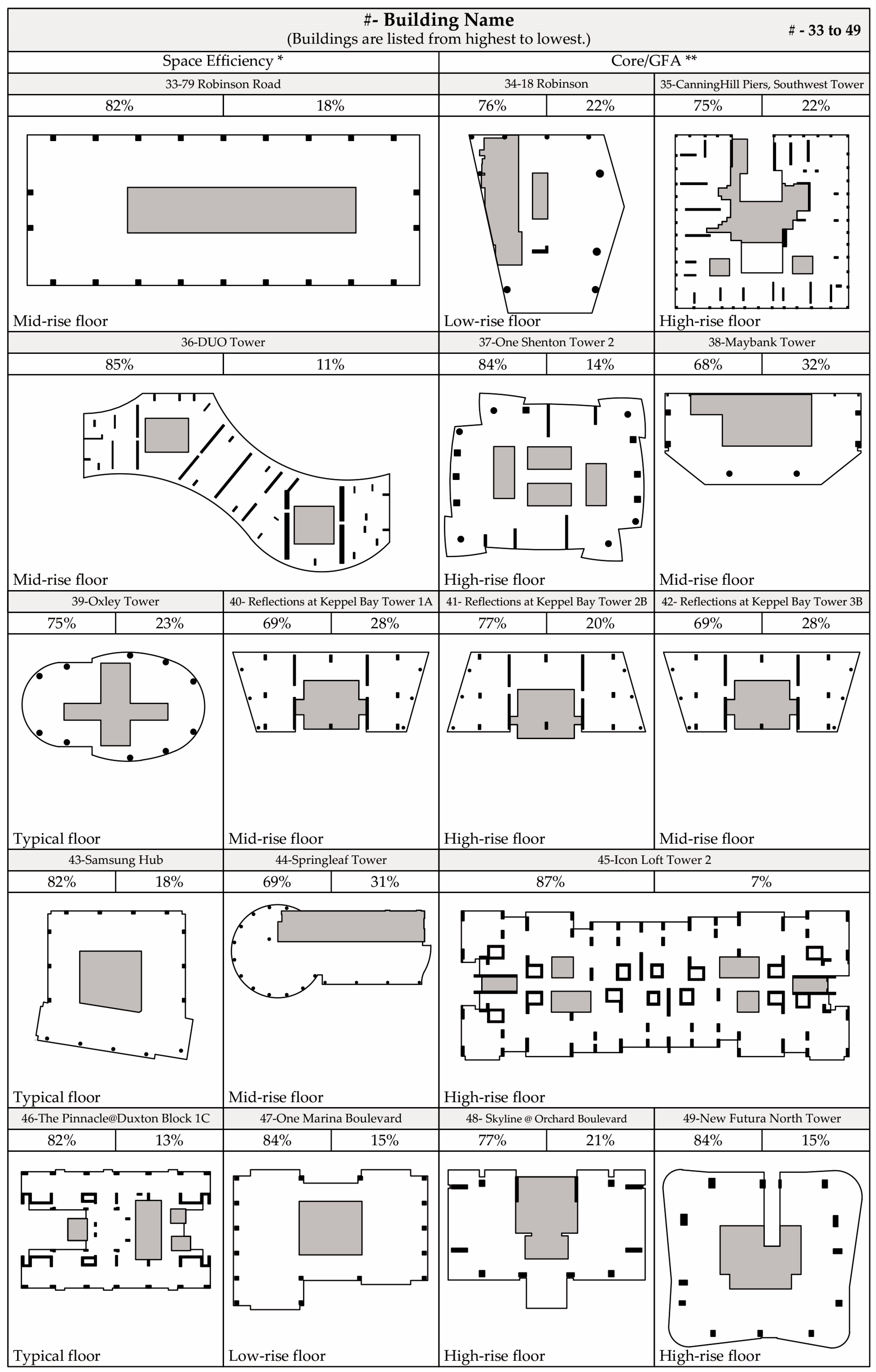
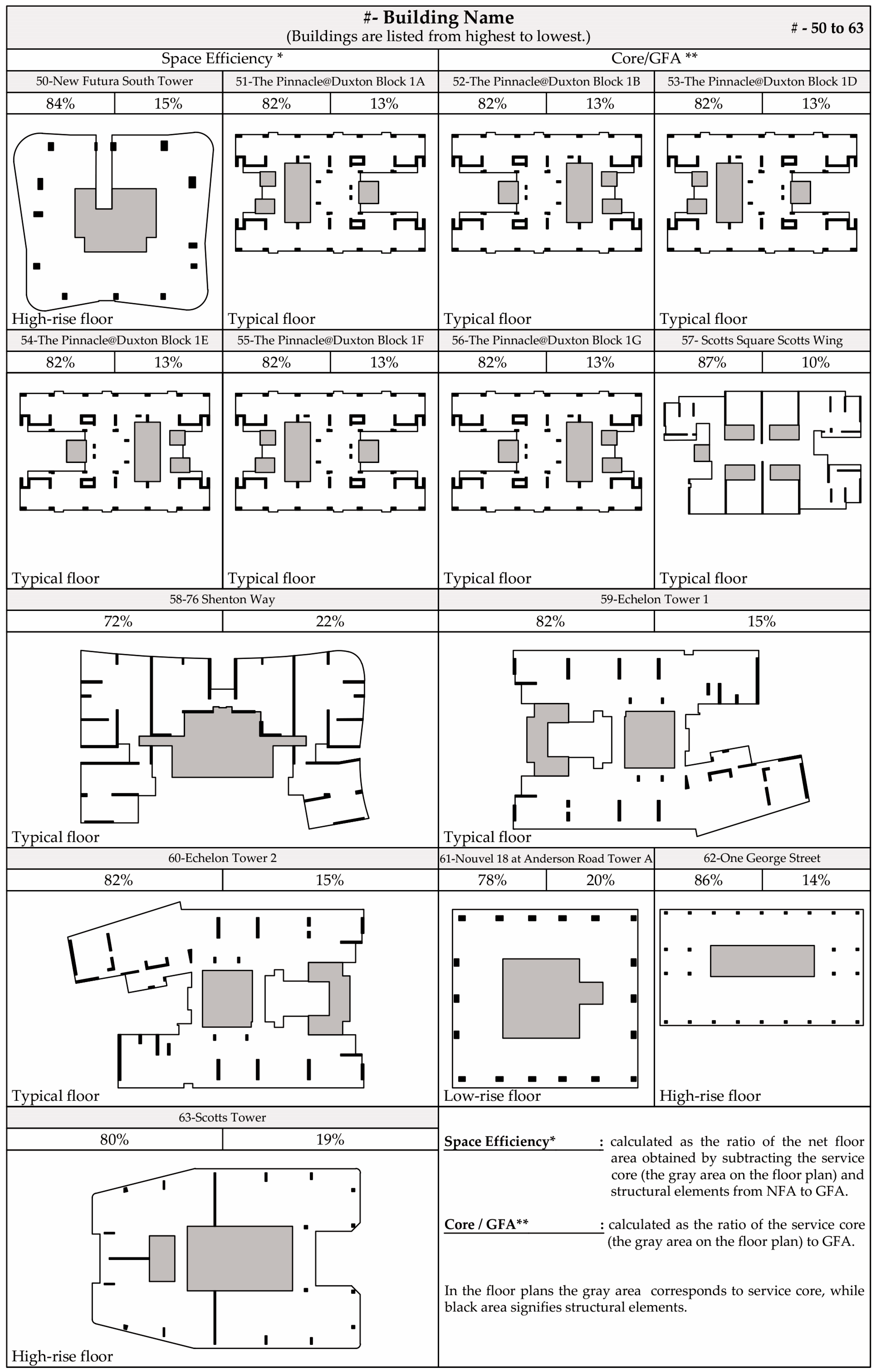
References
- Vasagar, J. Lion City: Singapore and the Invention of Modern Asia; Simon and Schuster: New York, NY, USA, 2022. [Google Scholar]
- Li, Y.; Du, H. Research on the spatial characteristics of sky gardens based on networked pictures: A case study of Singapore. J. Asian Arch. Build. Eng. 2022, 21, 2247–2261. [Google Scholar] [CrossRef]
- Chew, M.Y. Façade inspection for falling objects from tall buildings in Singapore. Int. J. Build. Pathol. Adapt. 2023, 41, 162–183. [Google Scholar] [CrossRef]
- Dal Molin, R.; Ragiv, S.; Giacomello, E. Tall Buildings and City Development: Comparison of Five Case Studies. CTBUH J. 2023, 2023, 28–35. [Google Scholar]
- Yuen, B. Liveability of tall residential buildings. In High-Rise Living in Asian Cities; Springer: Dordrecht, The Netherlands, 2010; pp. 129–147. [Google Scholar]
- Appold, S.J. Community development in tall residential buildings. In High-Rise Living in Asian Cities; Springer: Dordrecht, The Netherlands, 2010; pp. 149–177. [Google Scholar]
- Ye, Y.; Wang, Z.; Dong, N.; Zhou, X. Tall Buildings’ Lower Public Spaces: Impact on Health and Behavior. CTBUH J. 2020, 1, 2020. [Google Scholar]
- Lin, F.C.H. Ang Mo, Ah Beng and Rojak: Singapore’s architectural orientalism. J. Asian Archit. Build. Eng. 2023, 22, 896–913. [Google Scholar] [CrossRef]
- Lim, P.; Parker, A. Case Study: OCBC Bank Singapore. In Mentoring Millennials in an Asian Context: Talent Management Insights from Singapore; Emerald Publishing Limited: Bingley, UK, 2020; pp. 109–126. [Google Scholar]
- United Overseas Bank Plaza One, CTBUH Database. Available online: https://www.skyscrapercenter.com/building/united-overseas-bank-plaza-one/636 (accessed on 8 September 2024).
- Broms, B.B.; Lai, H.P. The Republic Plaza in Singapore—Foundation design. In Proceeding of the Bengt B. Broms Symposium in Geotechnical Engineering, Singapore, 13–15 December 1995; World Scientific: Singapore, 1995; pp. 3–24. [Google Scholar]
- Gil-Mastalerczyk, J. Sustainable design in the contemporary architecture of tall buildings. E3S Web Conf. 2016, 10, 00125. [Google Scholar] [CrossRef]
- Xu, M.; Fricker, P. Urban Agriculture: Climate-Responsive Design Strategies for Blue Infrastructure in the Context of Singapore. J. Digit. Landsc. Archit. 2023, 2023, 292–300. [Google Scholar]
- Ferng, J.; Chang, J.-H.; L’heureux, E.; Ryan, D.J. Climatic Design and Its Others “Southern” Perspectives in the Age of the Anthropocene. J. Arch. Educ. 2020, 74, 250–262. [Google Scholar] [CrossRef]
- Wong, M.S.; Hassell, R.; Phua, H.W. Oasia Hotel Downtown, Singapore: A tall prototype for the tropics. CTBUH Res. Pap. (III) 2018, 2018, 12–19. [Google Scholar]
- Szolomicki, J.; Golasz-Szolomicka, H. The Marina Bay Sands Complex in Singapore: A Modern Marvel of Structure and Technology. In IOP Conference Series: Materials Science and Engineering; IOP Publishing: Bristol, UK, 2020; Volume 960, p. 022051. [Google Scholar] [CrossRef]
- Ali, M.M.; Moon, K.S. Advances in Structural Systems for Tall Buildings: Emerging Developments for Contemporary Urban Giants. Buildings 2018, 8, 104. [Google Scholar] [CrossRef]
- Mughal, M.; Li, X.-X.; Norford, L.K. Urban heat island mitigation in Singapore: Evaluation using WRF/multilayer urban canopy model and local climate zones. Urban Clim. 2020, 34, 100714. [Google Scholar] [CrossRef]
- Du, W.; Pan, T.-C. Probabilistic seismic hazard assessment for Singapore. Nat. Hazards 2020, 103, 2883–2903. [Google Scholar] [CrossRef]
- Balendra, T.; Lam, N.; Wilson, J.; Kong, K. Analysis of long-distance earthquake tremors and base shear demand for buildings in Singapore. Eng. Struct. 2002, 24, 99–108. [Google Scholar] [CrossRef]
- Gholamalipour, P.; Ge, H.; Stathopoulos, T. Wind-driven rain (WDR) loading on building facades: A state-of-the-art review. Build. Environ. 2022, 221. [Google Scholar] [CrossRef]
- Tong, S.; Wen, J.; Wong, N.H.; Tan, E. Impact of façade design on indoor air temperatures and cooling loads in residential buildings in the tropical climate. Energy Build. 2021, 243. [Google Scholar] [CrossRef]
- Lim, L.C.; Chan, S.O. Pioneers of Singapore: Builders of a Better Tomorrow; Asiapac Books: Singapore, 2024. [Google Scholar]
- Xu, Z.; Zayed, T.; Niu, Y. Comparative analysis of modular construction practices in mainland China, Hong Kong and Singapore. J. Clean. Prod. 2020, 245, 118861. [Google Scholar] [CrossRef]
- Thai, H.-T.; Ngo, T.; Uy, B. A review on modular construction for high-rise buildings. Structures 2020, 28, 1265–1290. [Google Scholar] [CrossRef]
- Liu, Z.; Hwang, B.-G.; Lim, J.M. Prefabricated and Prefinished Volumetric Construction: Assessing Implementation Status, Perceived Benefits, and Critical Risk Factors in the Singapore Built Environment Sector. J. Manag. Eng. 2023, 39, 04023045. [Google Scholar] [CrossRef]
- Lim, J. HDB: High-density typologies for building community. In Future Urban Habitation: Transdisciplinary Perspectives, Conceptions, and Designs; Wiley: Hoboken, NJ, USA, 2022; pp. 165–183. [Google Scholar]
- Lim, S.H. Seascape the landscape of Singapore, repurposing land in a land scarce nation. In Proceedings of the WCFS2019 World Conference on Floating Solutions, Singapore, 22–23 April 2019; Springer: Singapore, 2020; pp. 385–410. [Google Scholar]
- Wong, C.; Wood, J.; Paturi, S. Vertical farming: An assessment of Singapore City. eTropic Electron. J. Stud. Trop. 2020, 19, 228–248. [Google Scholar]
- Raihan, A.; Tuspekova, A. The nexus between economic growth, energy use, urbanization, tourism, and carbon dioxide emissions: New insights from Singapore. Sustain. Anal. Model. 2022, 2, 100009. [Google Scholar] [CrossRef]
- Acero, J.A.; Koh, E.J.; Ruefenacht, L.A.; Norford, L.K. Modelling the influence of high-rise urban geometry on outdoor thermal comfort in Singapore. Urban Clim. 2021, 36, 100775. [Google Scholar] [CrossRef]
- Zeng, X.; Tunçer, B. Art Places and Their Impact on Property Prices of Condominiums in Singapore. In Proceedings of the International Conference on Computer-Aided Architectural Design Futures, Delft, The Netherlands, 5–7 July 2021; Springer: Singapore, 2021; pp. 107–124. [Google Scholar]
- Rangaswamy, E.; Chong, Y.; Nawaz, N. A Study on the Relationship Between the Affordability of Private Residential Property and its Demand in Singapore. Front. Built Environ. 2022, 8, 796090. [Google Scholar] [CrossRef]
- Huseien, G.F.; Shah, K.W. A review on 5G technology for smart energy management and smart buildings in Singapore. Energy AI 2022, 7, 100116. [Google Scholar] [CrossRef]
- Hwang, B.-G.; Ngo, J.; Teo, J.Z.K. Challenges and Strategies for the Adoption of Smart Technologies in the Construction Industry: The Case of Singapore. J. Manag. Eng. 2022, 38, 05021014. [Google Scholar] [CrossRef]
- Hwang, B.-G.; Ngo, J.; Her, P.W.Y. Integrated Digital Delivery: Implementation status and project performance in the Singapore construction industry. J. Clean. Prod. 2020, 262, 121396. [Google Scholar] [CrossRef]
- Yang, Y.; Hu, G.; Spanos, C.J. Stochastic Optimal Control of HVAC System for Energy-Efficient Buildings. IEEE Trans. Control. Syst. Technol. 2021, 30, 376–383. [Google Scholar] [CrossRef]
- Shao, Y.; Parks, A.; Ostertag, C.P. Lightweight concrete façade with multiple air gaps for sustainable and energy-efficient buildings in Singapore. Build. Environ. 2022, 223, 109463. [Google Scholar] [CrossRef]
- Kent, M.G.; Huynh, N.K.; Mishra, A.K.; Tartarini, F.; Lipczynska, A.; Li, J.; Sultan, Z.; Goh, E.; Karunagaran, G.; Natarajan, A.; et al. Energy savings and thermal comfort in a zero energy office building with fans in Singapore. Build. Environ. 2023, 243, 110674. [Google Scholar] [CrossRef]
- Pauzi, N.N.M.; Yeow, P.K.; Go, Z.H.; Hadibarata, T. Overview on the Implementation of Green Building Design in Malaysia, Singapore, Vietnam and Thailand. Int. J. Adv. Res. Technol. Innov. 2021, 3, 35–48. [Google Scholar]
- Zhang, D.; Tu, Y. Green building, pro-environmental behavior and well-being: Evidence from Singapore. Cities 2021, 108, 102980. [Google Scholar] [CrossRef]
- Cheung, T.; Schiavon, S.; Graham, L.T.; Tham, K.W. Occupant satisfaction with the indoor environment in seven commercial buildings in Singapore. Build. Environ. 2021, 188, 107443. [Google Scholar] [CrossRef]
- Hafez, F.S.; Sa’Di, B.; Safa-Gamal, M.; Taufiq-Yap, Y.; Alrifaey, M.; Seyedmahmoudian, M.; Stojcevski, A.; Horan, B.; Mekhilef, S. Energy Efficiency in Sustainable Buildings: A Systematic Review with Taxonomy, Challenges, Motivations, Methodological Aspects, Recommendations, and Pathways for Future Research. Energy Strat. Rev. 2023, 45, 101013. [Google Scholar] [CrossRef]
- Su, B.; Goh, T.; Ang, B.; Ng, T.S. Energy consumption and energy efficiency trends in Singapore: The case of a meticulously planned city. Energy Policy 2022, 161, 112732. [Google Scholar] [CrossRef]
- Diehl, J.A.; Sweeney, E.; Wong, B.; Sia, C.S.; Yao, H.; Prabhudesai, M. Feeding cities: Singapore’s approach to land use planning for urban agriculture. Glob. Food Secur. 2020, 26, 100377. [Google Scholar] [CrossRef]
- Lim, T.K.; Rajabifard, A.; Khoo, V.; Sabri, S.; Chen, Y. The smart city in Singapore: How environmental and geospatial innovation lead to urban livability and environmental sustainability. In Smart Cities for Technological and Social Innovation; Academic Press: Cambridge, MA, USA, 2021; pp. 29–49. [Google Scholar]
- Chan, Y.K. “Let Raffles stand where he stands today”: A symbol of the colonial in Singapore during the Cold War. In Cold War Cities; Routledge: Abingdon, UK, 2021; pp. 148–170. [Google Scholar]
- Yan, Q.I.N.; Huan, W. Prototype, Diversity, and Mixture: The Experience of Commercial Complex Development in Singapore. New Archit. 2023, 2023, 76. [Google Scholar]
- Tuure, A.; Ilgın, H.E. Space Efficiency in Finnish Mid-Rise Timber Apartment Buildings. Buildings 2023, 13, 2094. [Google Scholar] [CrossRef]
- Ilgın, H.E. Space efficiency in contemporary supertall office buildings. J. Arch. Eng. 2021, 27, 04021024. [Google Scholar] [CrossRef]
- Ilgın, H.E. Space efficiency in contemporary supertall residential buildings. Architecture 2021, 1, 25–37. [Google Scholar] [CrossRef]
- Ilgın, H.E. A study on space efficiency in contemporary supertall mixed-use buildings. J. Build. Eng. 2023, 69. [Google Scholar] [CrossRef]
- Okbaz, F.T.; Sev, A. A model for determining the space efficiency in non-orthogonal high rise office buildings. J. Fac. Eng. Archit. Gazi Univ. 2023, 38, 113–125. [Google Scholar]
- Ibrahimy, R.; Mohmmand, M.A.; Elham, F.A. An Evaluation of Space Use Efficiency in Residential Houses, Kabul City. J. Res. Appl. Sci. Biotechnol. 2023, 2, 1–6. [Google Scholar] [CrossRef]
- Goessler, T.; Kaluarachchi, Y. Smart Adaptive Homes and Their Potential to Improve Space Efficiency and Personalisation. Buildings 2023, 13, 1132. [Google Scholar] [CrossRef]
- Hamid, G.M.; Elsawi, M.; Yusra, O. The Impacts of Spatial Parameters on Space Efficiency in Hybrid Villa-Apartments in Greater Khartoum, Sudan. J. Archit. Plan. 2022, 34, 425–440. [Google Scholar]
- Suga, R. Space Efficiency in Hotel Development. Master’s Thesis, MODUL University Vienna, Vienna, Austria, 2021. [Google Scholar]
- Arslan Kılınç, G. Improving a Model for Determining Space Efficiency of Tall Office Buildings. Ph.D. Thesis, Department of Architecture, Mimar Sinan Fine Art University, Istanbul, Turkey, 2019. (In Turkish). [Google Scholar]
- Von Both, P. A stakeholder- and function-based planning method for space-efficient buildings. IOP Conf. Ser. Earth Environ. Sci. 2019, 323, 012040. [Google Scholar] [CrossRef]
- Höjer, M.; Mjörnell, K. Measures and steps for more efficient use of buildings. Sustainability 2018, 10, 1949. [Google Scholar] [CrossRef]
- Nam, H.-J.; Shim, J.-H. An analysis of the change in space efficiency based on various tall building corner shapes and lease spans. J. Arch. Inst. Korea Plan. Des. 2016, 32, 13–20. [Google Scholar] [CrossRef]
- Zhang, L.; Zhang, L.; Wang, Y. Shape optimization of free-form buildings based on solar radiation gain and space efficiency using a multi-objective genetic algorithm in the severe cold zones of China. Sol. Energy 2016, 132, 38–50. [Google Scholar] [CrossRef]
- Sev, A.; Özgen, A. Space Efficiency In High-Rise Office Buildings. METU J. Fac. Arch. 2009, 26, 69–89. [Google Scholar] [CrossRef]
- Saari, A.; Tissari, T.; Valkama, E.; Seppänen, O. The effect of a redesigned floor plan, occupant density and the quality of indoor climate on the cost of space, productivity and sick leave in an office building–A case study. Build. Environ. 2006, 41, 1961–1972. [Google Scholar] [CrossRef]
- Kim, H.; Elnimeiri, M. Space efficiency in multi-use tall building. In Proceedings of the Tall Buildings in Historical Cities-Culture and Technology for Sustainable Cities, Seoul, Republic of Korea, 10–13 October 2004. [Google Scholar]
- Parekh, R. Automating the design process for smart building technologies. World J. Adv. Res. Rev. 2024, 23, 1213–1234. [Google Scholar] [CrossRef]
- Apanavičienė, R.; Shahrabani, M.M.N. Key factors affecting smart building integration into smart city: Technological aspects. Smart Cities 2023, 6, 1832–1857. [Google Scholar] [CrossRef]
- Zhang, F.; Chan, A.P.; Li, D. Developing smart buildings to reduce indoor risks for safety and health of the elderly: A systematic and bibliometric analysis. Saf. Sci. 2023, 168, 106310. [Google Scholar] [CrossRef]
- Selvaraj, R.; Kuthadi, V.M.; Baskar, S. Smart building energy management and monitoring system based on artificial intelligence in smart city. Sustain. Energy Technol. Assess. 2023, 56, 103090. [Google Scholar] [CrossRef]
- Goyal, S.; Ingley, H.A.; Barooah, P. Occupancy-based zone-climate control for energy-efficient buildings: Complexity vs. performance. Appl. Energy 2013, 106, 209–221. [Google Scholar] [CrossRef]
- Sharma, V.; Mistry, V. Human-centric HVAC control: Balancing comfort and energy efficiency. Eur. J. Adv. Eng. Technol. 2023, 10, 42–48. [Google Scholar]
- Barone, G.; Buonomano, A.; Forzano, C.; Giuzio, G.; Palombo, A.; Russo, G. A new thermal comfort model based on physiological parameters for the smart design and control of energy-efficient HVAC systems. Renew. Sustain. Energy Rev. 2023, 173, 113015. [Google Scholar] [CrossRef]
- Ibarra, A.M.; González-Vidal, A.; Skarmeta, A. PLEIAData: Consumption, HVAC, temperature, weather and motion sensor data for smart buildings applications. Sci. Data 2023, 10, 118. [Google Scholar] [CrossRef]
- Taneja, J.; Krioukov, A.; Dawson-Haggerty, S.; Culler, D. Enabling advanced environmental conditioning with a building application stack. In Proceedings of the 2013 International Green Computing Conference (IGCC), Arlington, VA, USA, 27–29 June 2013; pp. 1–10. [Google Scholar]
- Fierro, G.; Culler, D.E. Xbos: An extensible building operating system. In Proceedings of the 2nd ACM International Conference on Embedded Systems for Energy-Efficient Built Environments, Seoul, Republic of Korea, 4–5 November 2015; pp. 119–120. [Google Scholar]
- Opoku, A.; Ahmed, V.; Akotia, J. Research methodology in the built environment. In Choosing an Appropriate Research Method; Routledge: Abingdon, UK, 2016; pp. 32–49. [Google Scholar]
- Noor, K.B.M. Case Study: A Strategic Research Methodology. Am. J. Appl. Sci. 2008, 5, 1602–1604. [Google Scholar] [CrossRef]
- Marsh, E.; Allen, S.; Hattam, L. Tackling uncertainty in life cycle assessments for the built environment: A review. Build. Environ. 2023, 231, 109941. [Google Scholar] [CrossRef]
- Saka, A.; Taiwo, R.; Saka, N.; Salami, B.A.; Ajayi, S.; Akande, K.; Kazemi, H. GPT models in construction industry: Opportunities, limitations, and a use case validation. Dev. Built Environ. 2024, 17, 100300. [Google Scholar] [CrossRef]
- Pan, Y.; Zhu, M.; Lv, Y.; Yang, Y.; Liang, Y.; Yin, R.; Yang, Y.; Jia, X.; Wang, X.; Zeng, F.; et al. Building energy simulation and its application for building performance optimization: A review of methods, tools, and case studies. Adv. Appl. Energy 2023, 10, 100135. [Google Scholar] [CrossRef]
- CTBUH Council on Tall Buildings Urban Habitat Illinois Institute of Technology, S.R. Crown Hall, 3360 South State Street, Chicago, Illinois, USA. Available online: https://www.ctbuh.org (accessed on 8 September 2024).
- Urban Redevelopment Authority (URA). Available online: https://www.ura.gov.sg/Corporate/Guidelines (accessed on 8 September 2024).
- Aslantamer, N.; Ilgın, H.E. Evaluating Space Efficiency of Tall Buildings in Turkey. Buildings 2024, 14, 2138. [Google Scholar] [CrossRef]
- Ilgın, H.E. An Analysis of Space Efficiency in Asian Supertall Towers. Int. J. Build. Pathol. Adapt. 2023, 41, 237–253. [Google Scholar] [CrossRef]
- Ilgın, H.E. Examination of spatial efficiency in super-tall towers within the Middle Eastern context. Open House Int. 2024; ahead-of print. [Google Scholar] [CrossRef]
- Ilgın, H.E.; Aslantamer, N. Space Efficiency in North American Skyscrapers. Buildings 2024, 14, 2382. [Google Scholar] [CrossRef]
- Ilgın, H.E. Core Design and Space Efficiency in Contemporary Supertall reside Buildings. In Sustainable High-Rise Buildings: Design, Technology, and Innovation; Al-Kodmany, K., Du, P., Ali, M.M., Eds.; The Institution of Engineering and Technology: London, UK, 2022. [Google Scholar]
- Ilgın, H.E. Efficiency of Space Utilization in Supertall Towers with Free Forms. In The Costs of Climate Change Mitigation Innovations: A Pragmatic Outlook; Ting, D.S.-K., Stagner, J.A., Eds.; CRC press Taylor & Francis Group: Boca Raton, FL, USA, 2024; ISBN 9781032516813. [Google Scholar] [CrossRef]
- Building Owners and Managers Association (BOMA). Available online: https://www.boma.org/ (accessed on 8 September 2024).
- Royal Institution of Chartered Surveyors (RICS). Available online: https://www.rics.org/ (accessed on 8 September 2024).
- International Property Measurement Standards (IPMS). Available online: https://www.rics.org/profession-standards/rics-standards-and-guidance/sector-standards/real-estate-standards/international-property-measurement-standards (accessed on 8 September 2024).
- Xie, Y.; Du, P.; Luo, J. Hierarchical Quantification of Utilization Rate and Related Indicators of Mixed-Use High-Rise Buildings. Buildings 2022, 12, 956. [Google Scholar] [CrossRef]
- Oldfield, P.; Doherty, B. Offset cores: Trends, drivers and frequency in tall buildings. CTBUH J. 2019, 40–45. [Google Scholar]
- Trabucco, D. An analysis of the relationship between service cores and the embodied/running energy of tall buildings. Struct. Des. Tall Spéc. Build. 2008, 17, 941–952. [Google Scholar] [CrossRef]
- Barsim, M.M.; Bassily, M.A.; El-Batsh, H.M.; Rihan, Y.A.; Sherif, M.M. Numerical simulation of an experimental atrium fires in combined natural and forced ventilation by CFD. Int. J. Vent. 2020, 19, 1–24. [Google Scholar] [CrossRef]
- Ilgın, H.E.; Karjalainen, M. Tallest Timber Buildings: Main Architectural and Structural Design Considerations, Wood Industry—Past, Present and Future Outlook; IntechOpen: London, UK, 2022. [Google Scholar]
- Ilgın, H.E.; Aslantamer, N. High-Rise Timber Offices: Main Architectural and Structural Design Parameters. Buildings 2024, 14, 1951. [Google Scholar] [CrossRef]
- James, M. Twisted, Tapered, Tilted (Leaning) Towers: Structural Complexities & Advantages. Int. J. Innov. Res. Adv. Stud. 2017, 2017, 4. [Google Scholar]
- AlHamaydeh, M.; Elkafrawy, M.E.; Amin, F.M.; Maky, A.M.; Mahmoudi, F. Analysis and Design of UHPC Tall Buildings in UAE with Ductile Coupled Shear Walls Lateral Load Resisting System. In Proceedings of the 2022 Advances in Science and Engineering Technology International Conferences (ASET), Dubai, United Arab Emirates, 21–24 February 2022; pp. 1–6. [Google Scholar] [CrossRef]
- Memon, S.A.; Zain, M.; Zhang, D.; Rehman, S.K.U.; Usman, M.; Lee, D. Emerging trends in the growth of structural systems for tall buildings. J. Struct. Integr. Maint. 2020, 5, 155–170. [Google Scholar] [CrossRef]
- Christopoulos, C.; Zhong, C. Towards understanding, estimating and mitigating higher-mode effects for more resilient tall buildings. Resilient Cities Struct. 2022, 1, 53–64. [Google Scholar] [CrossRef]
- Yeang, K. Service Cores: Detail in Building; Wiley-Academy: London, UK, 2000. [Google Scholar]
- Ilgın, H.E.; Karjalainen, M.; Koponen, O. Various Geometric Configuration Proposals for Dovetail Wooden Horizontal Structural Members in Multistory Building Construction; IntechOpen: London, UK, 2022. [Google Scholar]
- Järvinen, J.; Ilgın, H.E.; Karjalainen, M. Wood Preservation Practices and Future Outlook: Perspectives of Experts from Finland. Forests 2022, 13, 1044. [Google Scholar] [CrossRef]
- Ilgın, H.E.; Karjalainen, M.; Koponen, O. Dovetailed Massive Wood Board Elements for Multi-Story Buildings. In Proceedings of the LIVENARCH VII Livable Environments & Architecture 7th International Congress OTHER ARCHITECT/URE(S), Trabzon, Turkey, 28–30 September 2021; Volume 1, pp. 47–60. [Google Scholar]
- Chew, L.W.; Li, X.-X.; Chew, M.Y.L. Climate Change Projection and Its Impacts on Building Façades in Singapore. Sustainability 2023, 15, 3156. [Google Scholar] [CrossRef]
- Rahardjo, H.; Nistor, M.M.; Gofar, N.; Satyanaga, A.; Xiaosheng, Q.; Chui Yee, S.I. Spatial distribution, variation and trend of five-day antecedent rainfall in Singapore. Georisk Assess. Manag. Risk Eng. Syst. Geohazards 2020, 14, 177–191. [Google Scholar] [CrossRef]
- Doan, Q.; Dipankar, A.; Simón-Moral, A.; Sanchez, C.; Prasanna, V.; Roth, M.; Huang, X. Urban-induced modifications to the diurnal cycle of rainfall over a tropical city. Q. J. R. Meteorol. Soc. 2021, 147, 1189–1201. [Google Scholar] [CrossRef]
- AlHamaydeh, M.; Elkafrawy, M.; Banu, S. Seismic Performance and Cost Analysis of UHPC Tall Buildings in UAE with Ductile Coupled Shear Walls. Materials 2022, 15, 2888. [Google Scholar] [CrossRef]
- Lei, V.Y.; Nematollahi, B.; Said, A.B.M.; Gopal, B.A.; Yee, T.S. Application of Ultra High Performance Fiber Re-inforced Concrete –The Malaysia Perspective. Int. J. Sustain. Constr. Eng. Technol. 2012, 3, 26–44. [Google Scholar]
- Jiang, D.; Xiao, C.; Chen, T.; Zhang, Y. Experimental Study of High-Strength Concrete-Steel Plate Composite Shear Walls. Appl. Sci. 2019, 9, 2820. [Google Scholar] [CrossRef]
- Gamero-Salinas, J.; Kishnani, N.; Monge-Barrio, A.; López-Fidalgo, J.; Sánchez-Ostiz, A. The influence of building form variables on the environmental performance of semi-outdoor spaces. A study in mid-rise and high-rise buildings of Singapore. Energy Build. 2021, 230, 110544. [Google Scholar] [CrossRef]
- Enker, R.A.; Morrison, G.M. The potential contribution of building codes to climate change response policies for the built environment. Energy Effic. 2020, 13, 789–807. [Google Scholar] [CrossRef]
- Liao, L.; Teo, E.A.L.; Chang, R.; Zhao, X. Diffusion of Building Information Modeling in Building Projects and Firms in Singapore. Sustainability 2020, 12, 7762. [Google Scholar] [CrossRef]
- Noh, S.-K. A Study on the Non-Contact Artificial Intelligence Elevator System Due to the Effect of COVID-19. Electronics 2024, 13, 3193. [Google Scholar] [CrossRef]
- Mansoor, H.B.; Tai, J.; Chee, Y.H.; Ong, K.; Khoo, Y.P.; Goh, A.; Tan, J. Setting Standards on Remote Monitoring & Diagnostic for lifts–A Singapore Context. In Proceedings of the 13th Symposium on Lift & Escalator Technologies, Northampton, UK, 21–22 September 2022; Volume 13, pp. 193–206. [Google Scholar]
- Shi, M.; Huang, X.; Choi, Y. Mechanical Analysis of Adding External Elevators by The Different Placement to The Existing Buildings. Acad. J. Sci. Technol. 2024, 10, 1–7. [Google Scholar] [CrossRef]

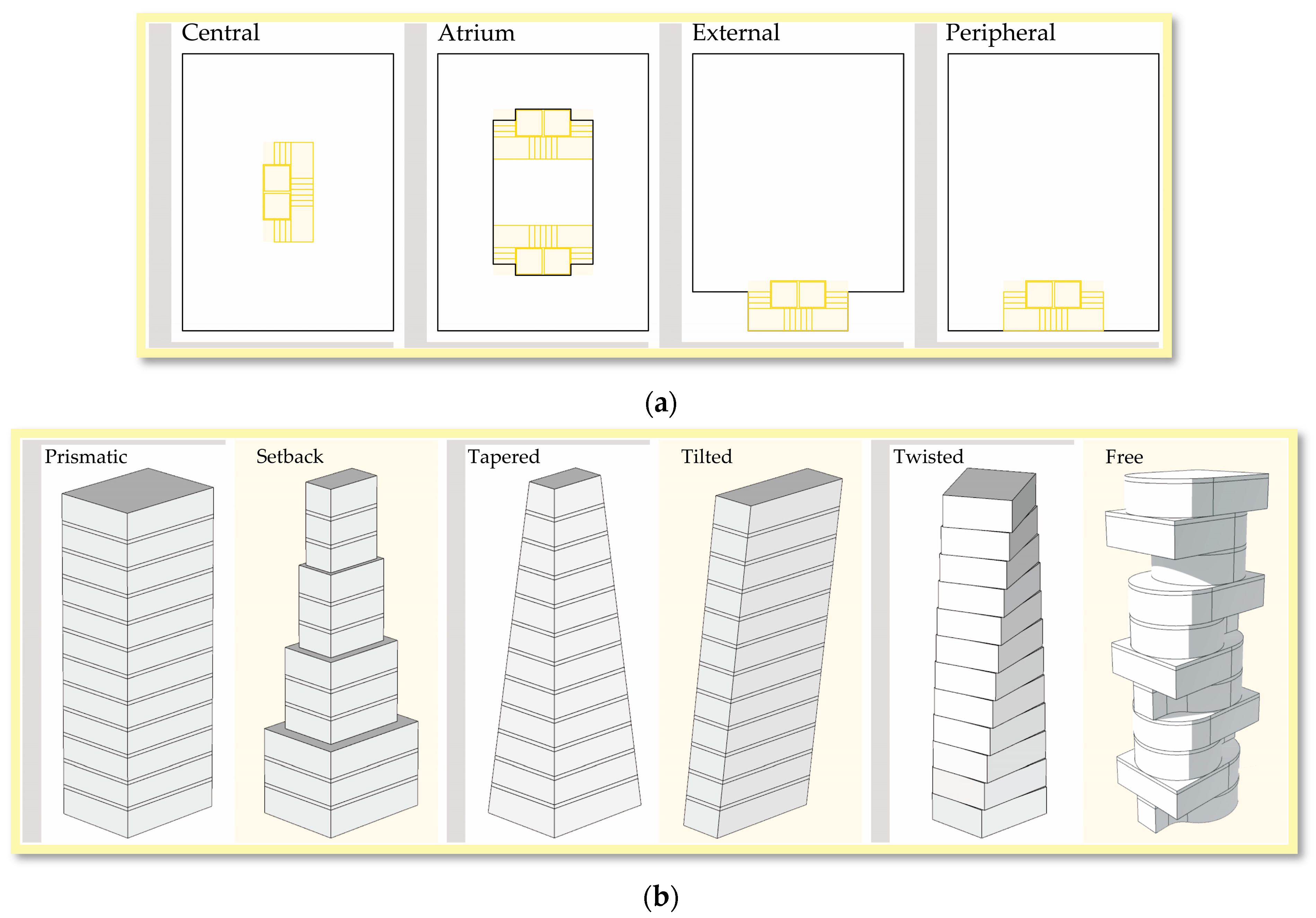
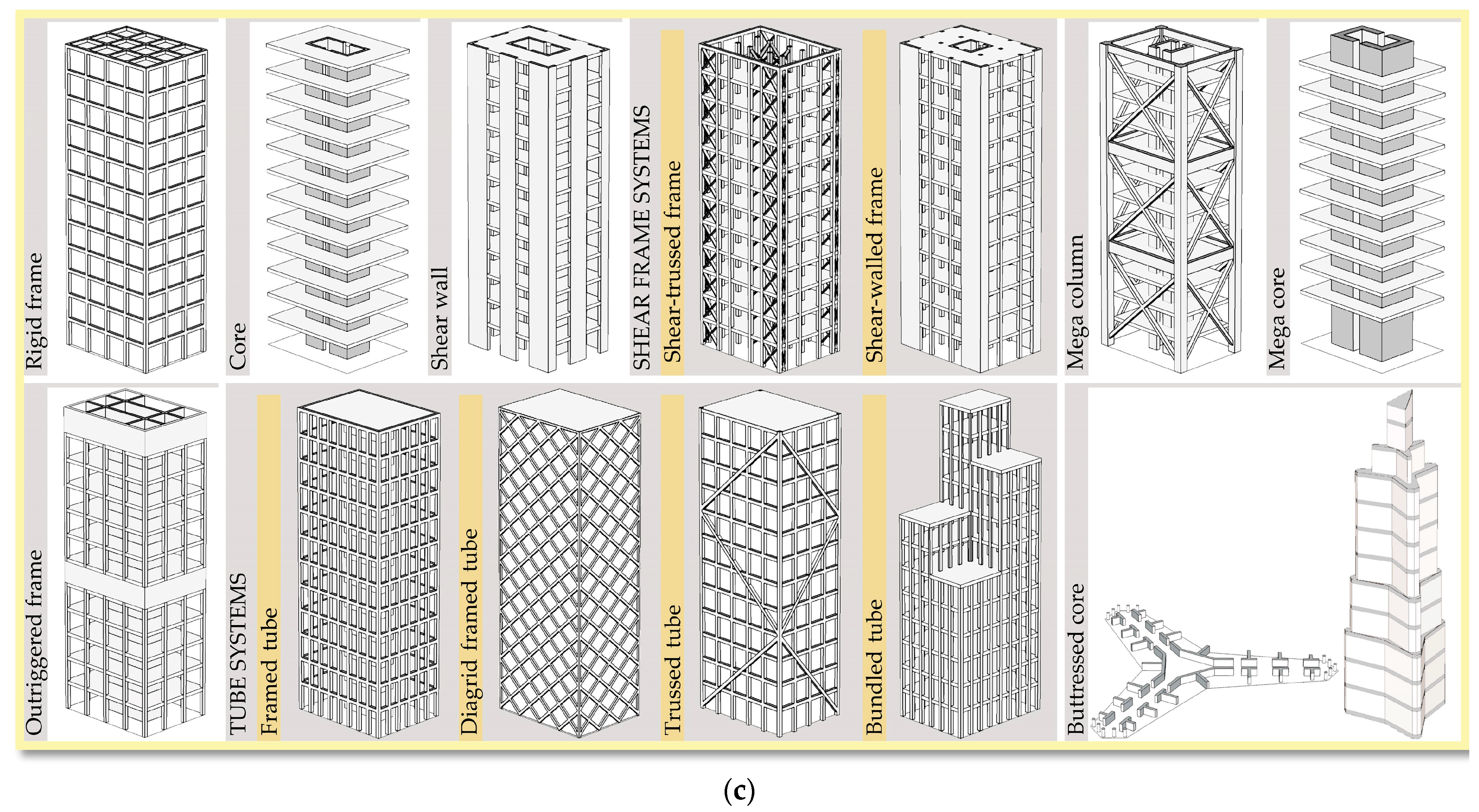
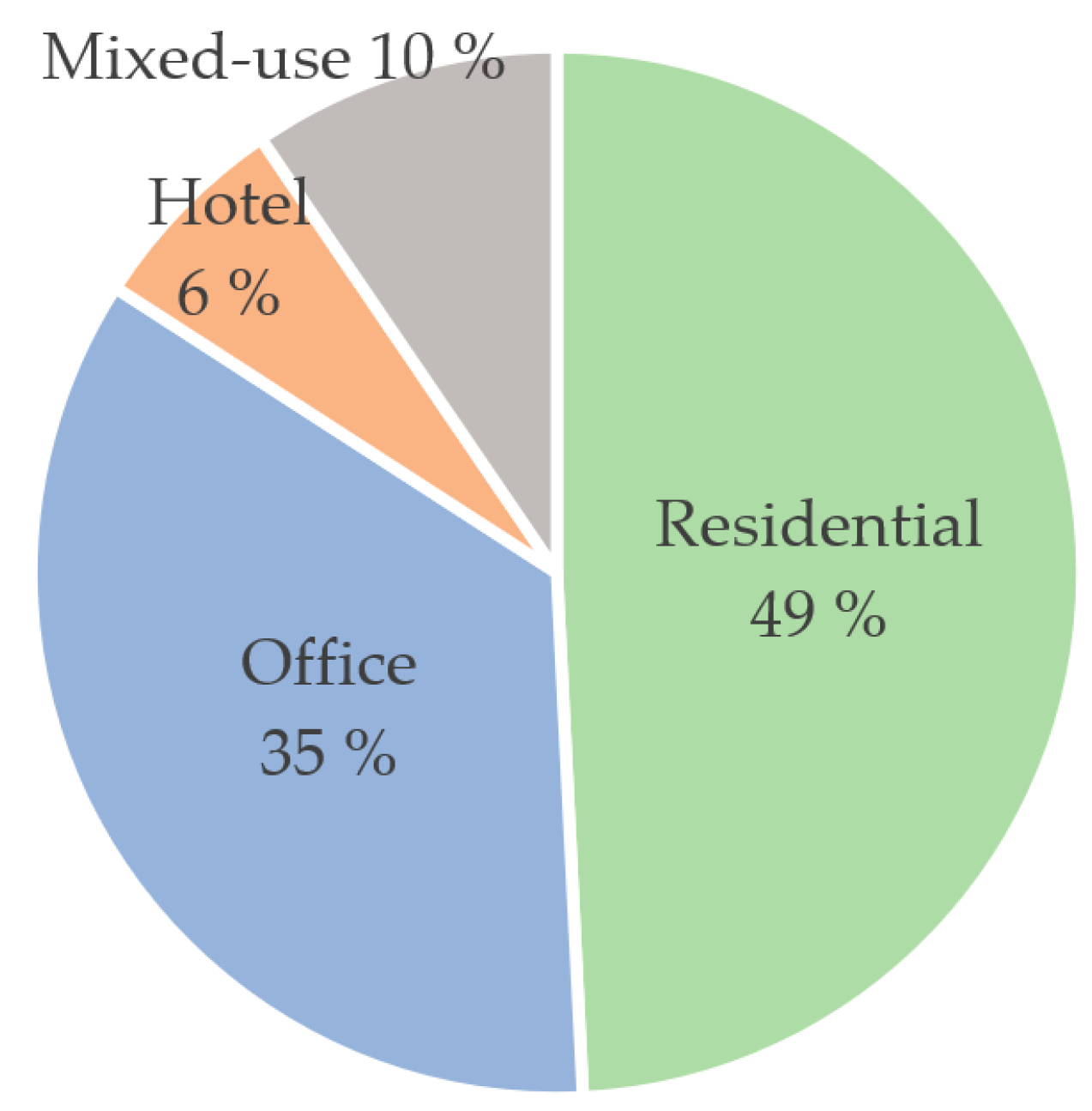
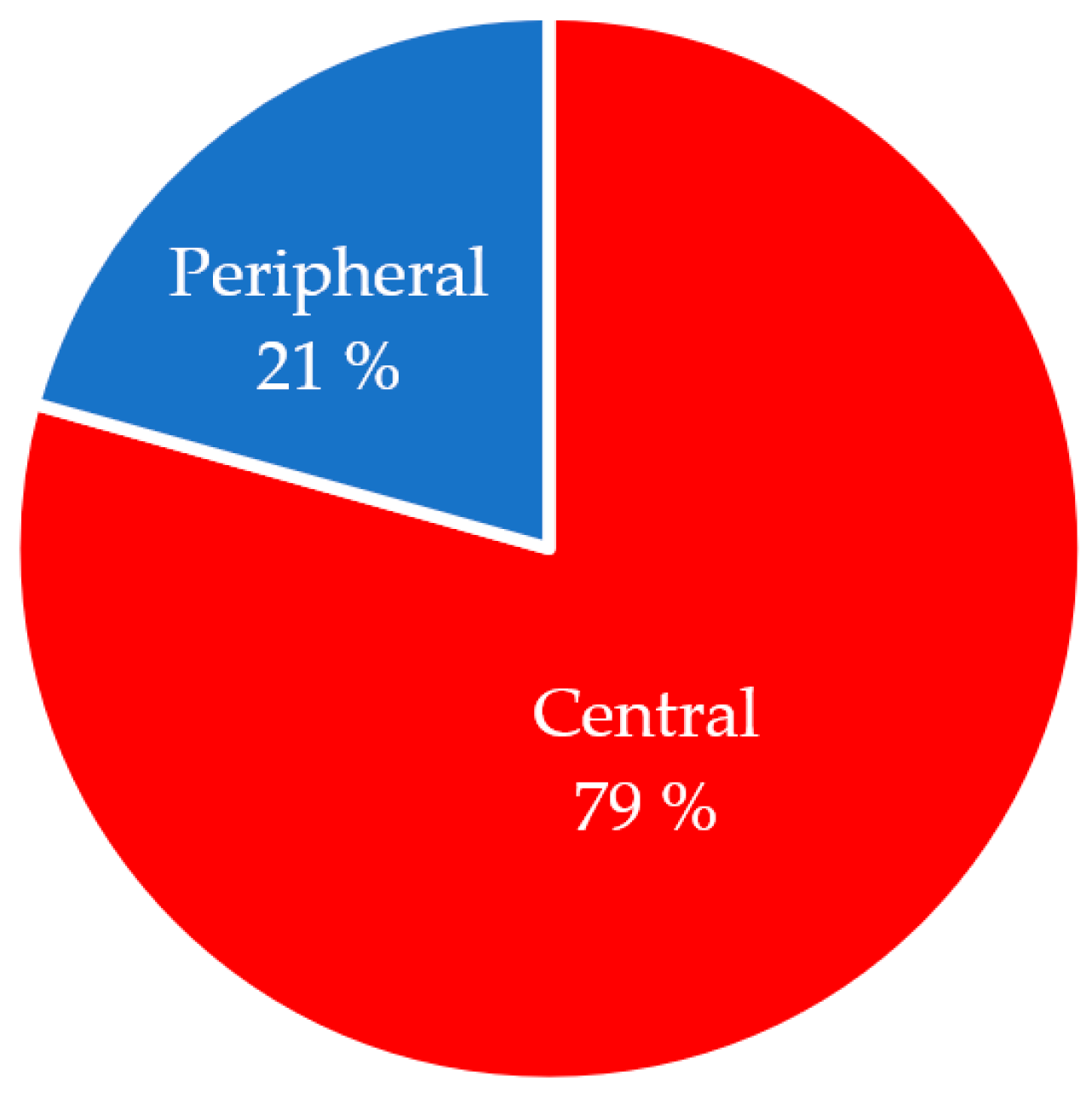
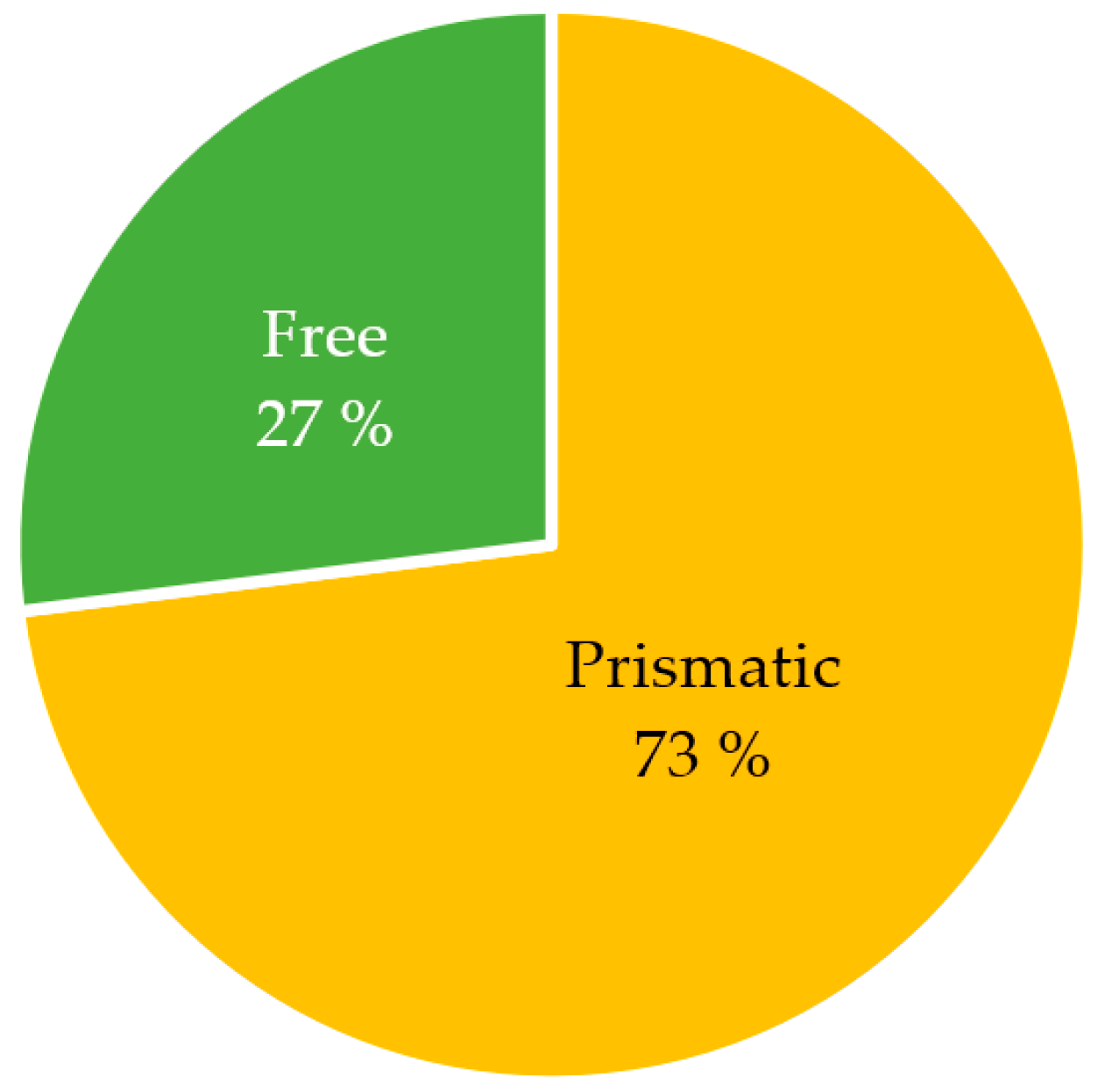

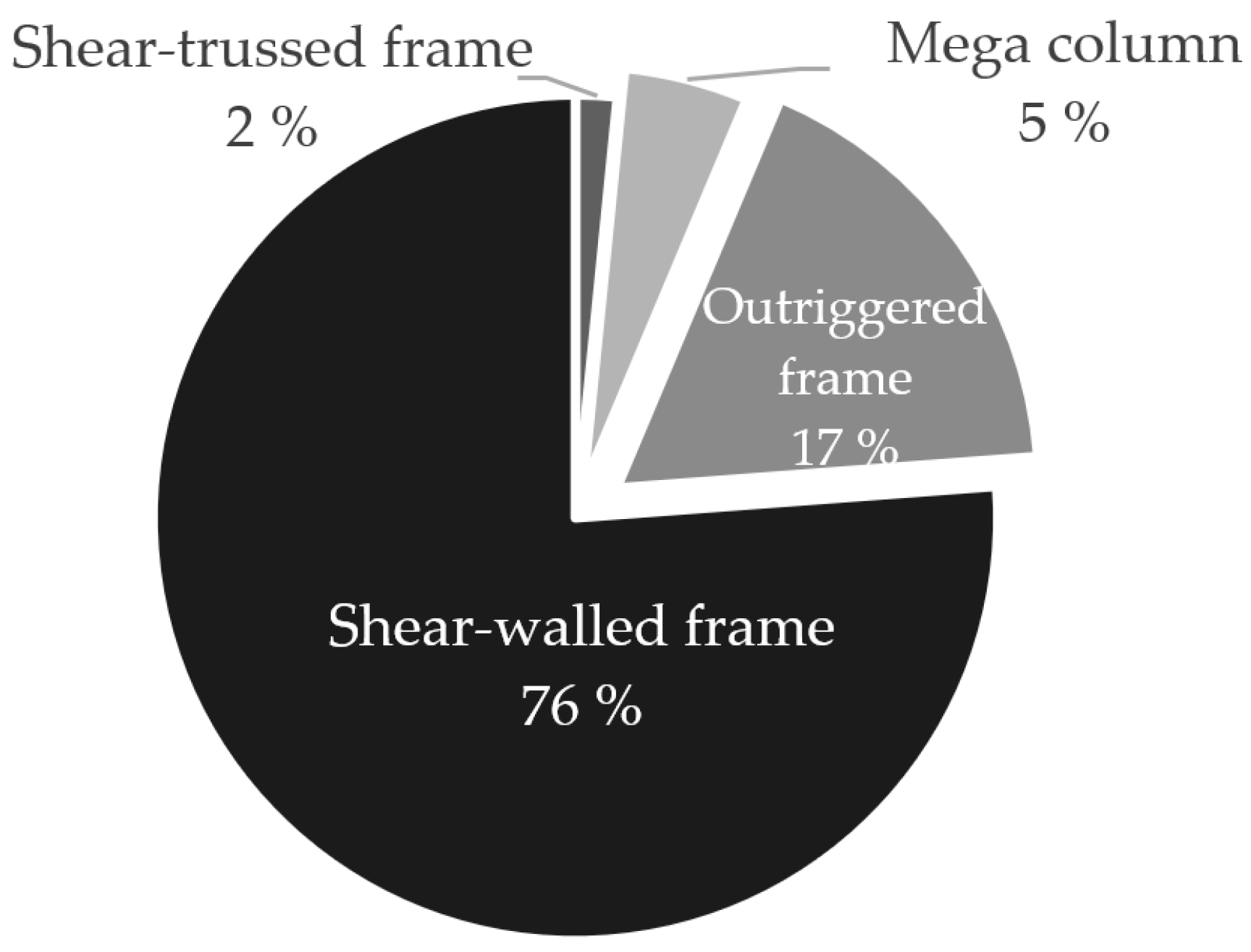
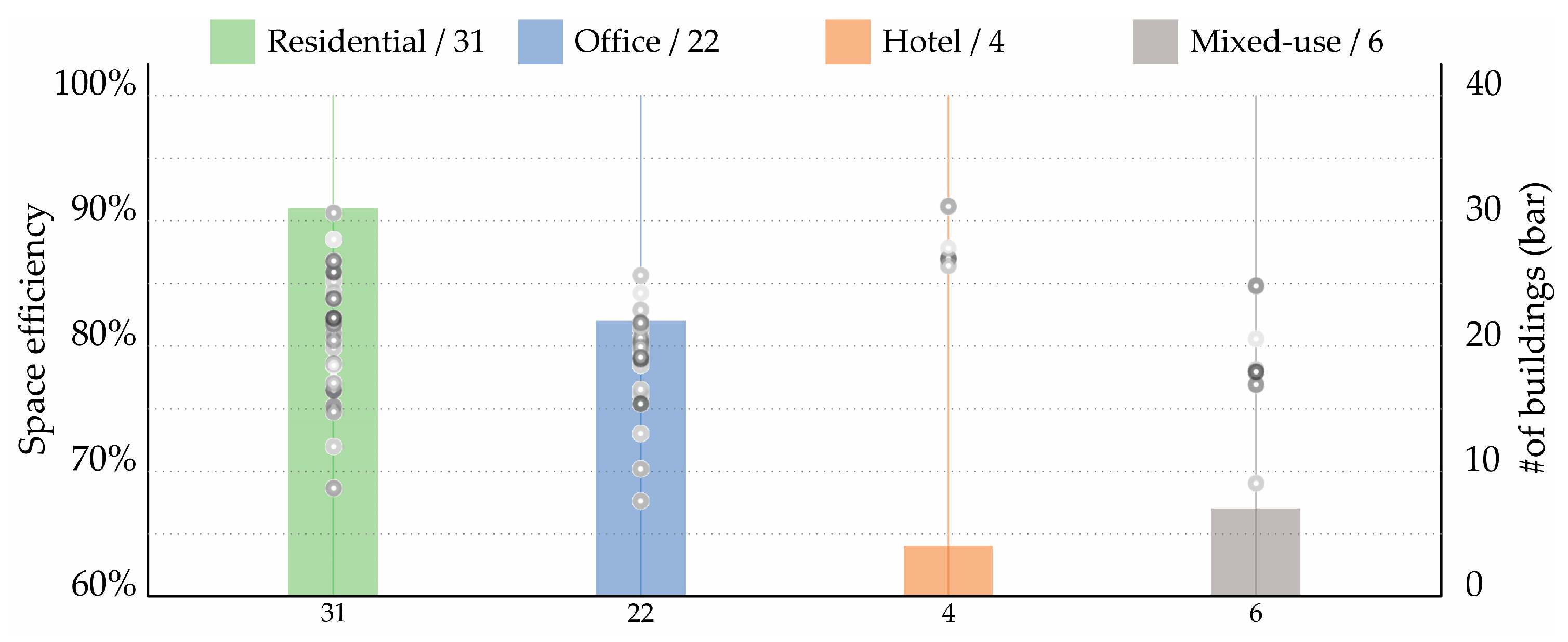
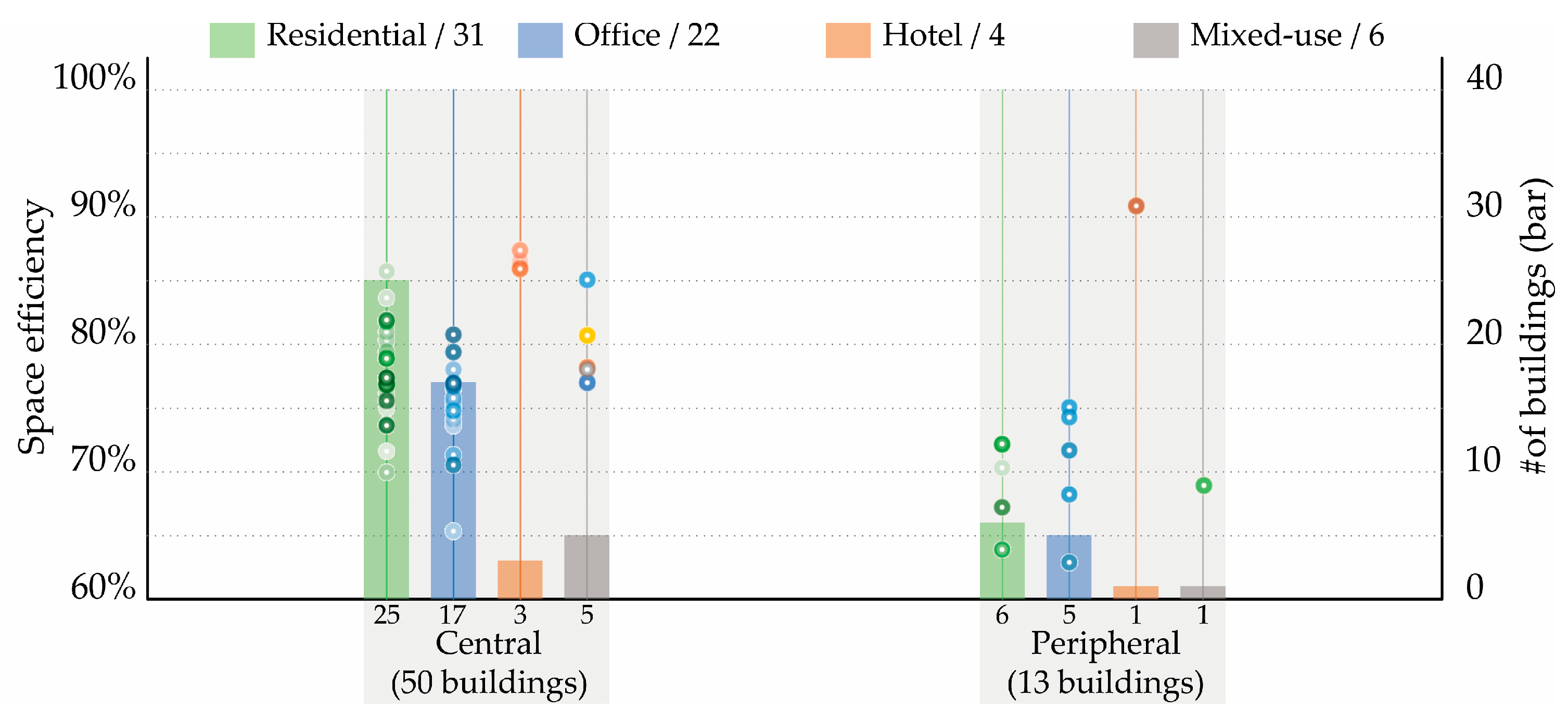
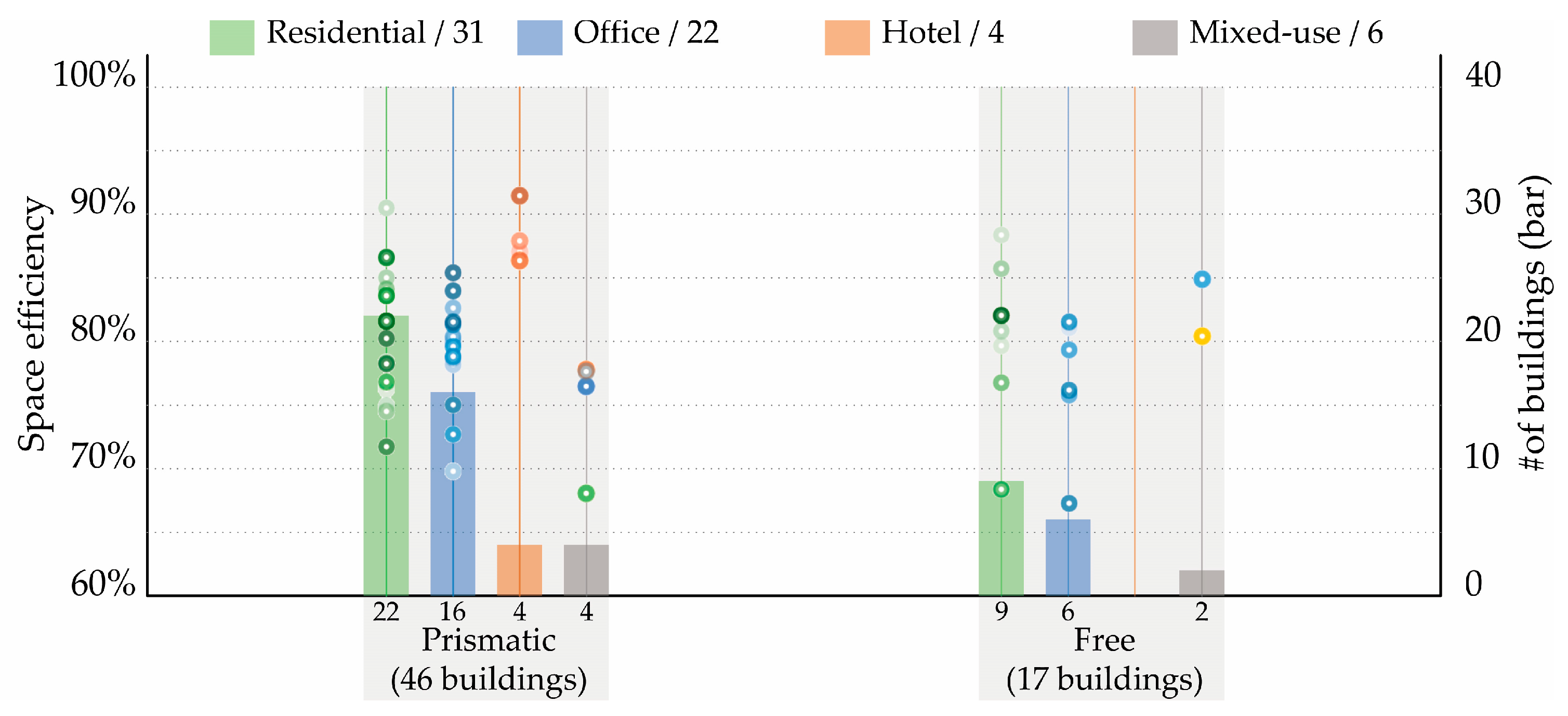
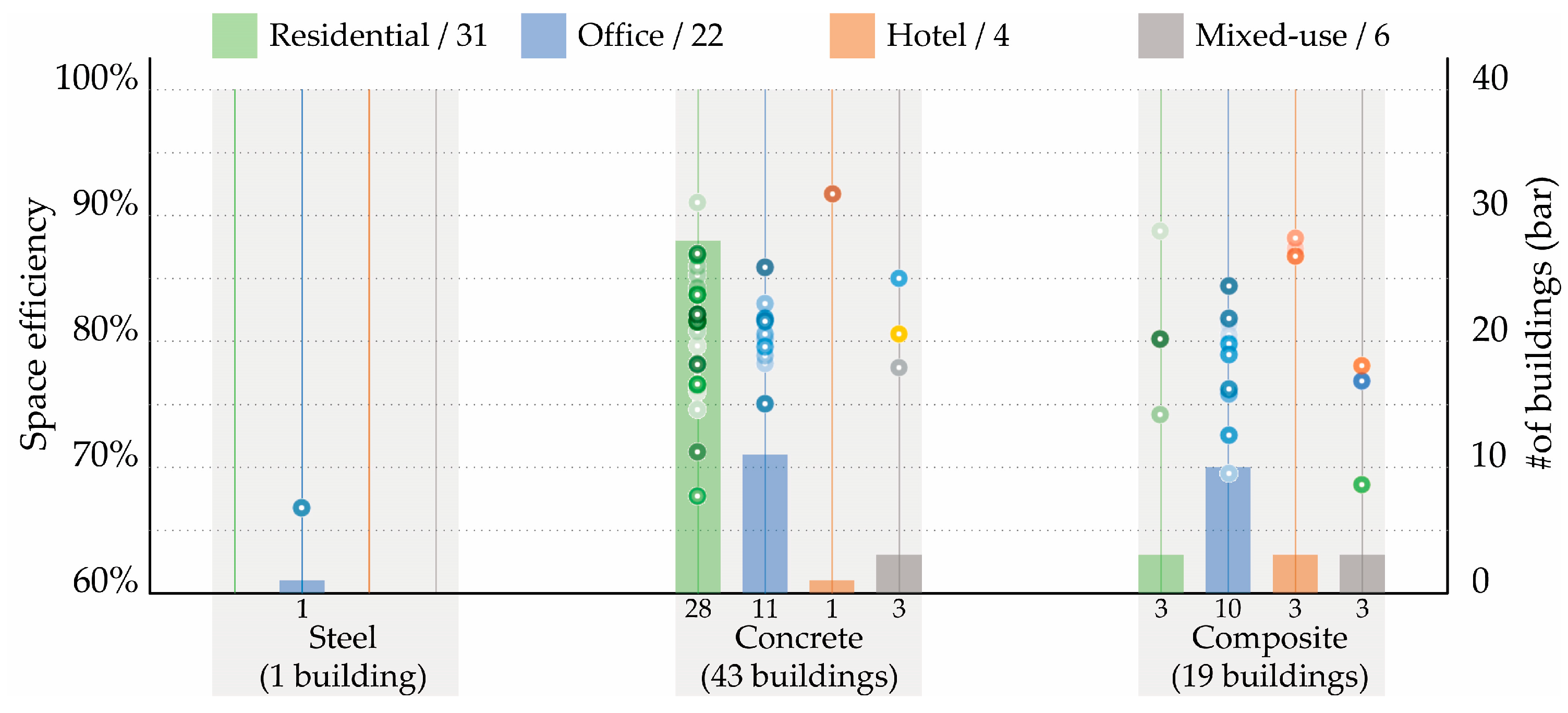
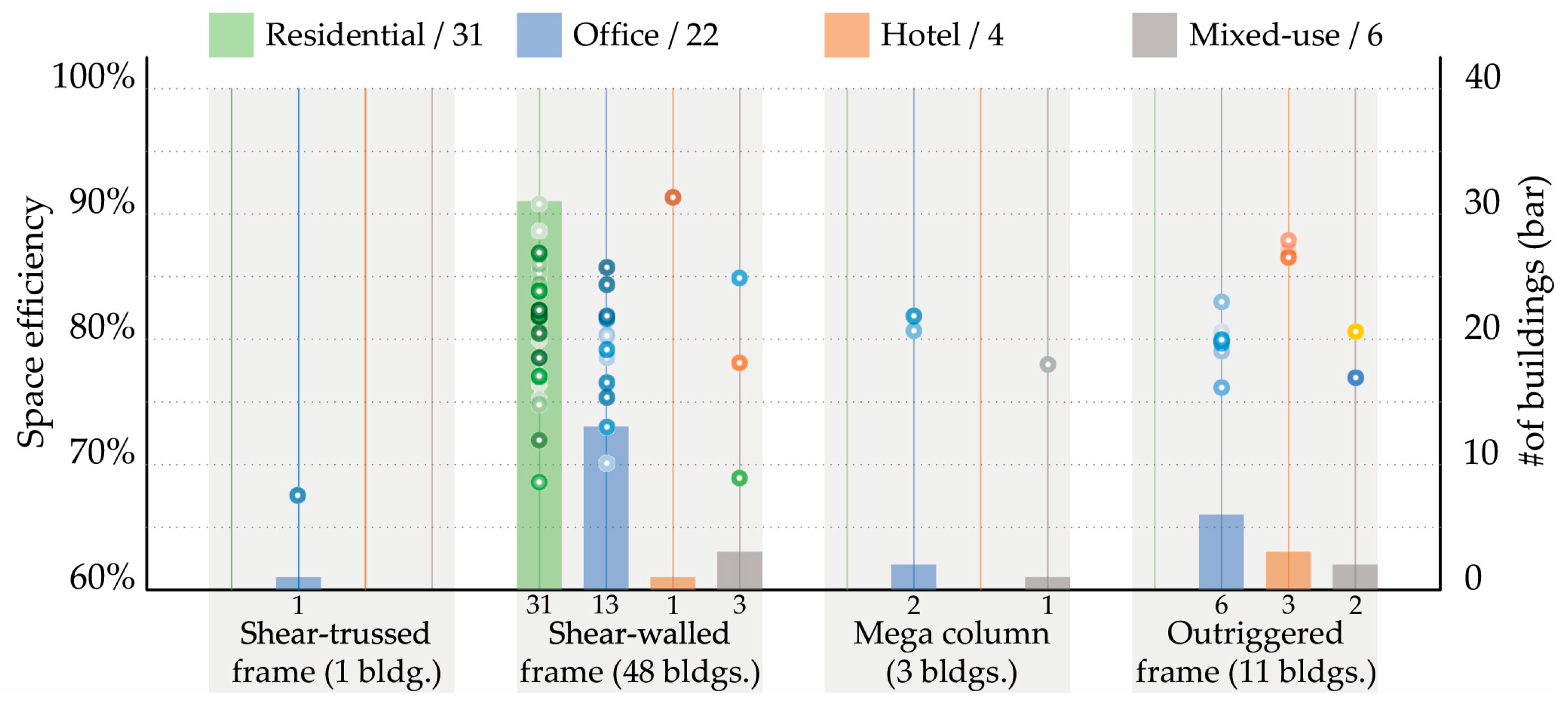
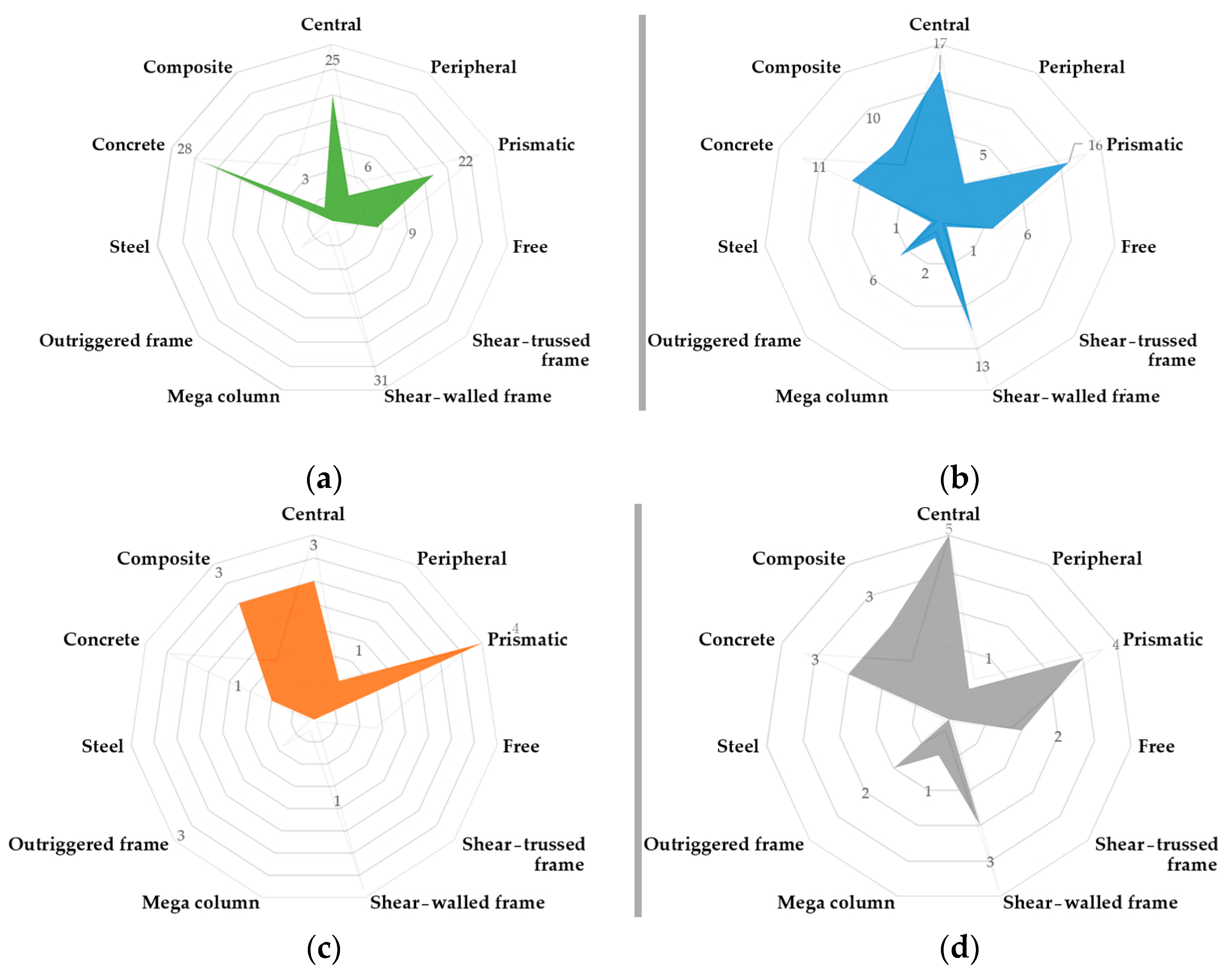
| Findings | Turkey | Asia | The Middle East | North America | |
|---|---|---|---|---|---|
| Function | Mixed-use (10%) Office (35%) Residential (49%) Hotel (6%) | Mixed-use (26%) Office (24%) Residential (48%) Hotel (2%) | Mixed-use (57%) Office (38%) Residential (5%) | Mixed-use (33%) Office (22%) Residential (45%) | Mixed-use (42%) Office (32%) Residential (22%) Hotel (3%) |
| Core type | Central (79%) Peripheral (21%) | Central (65%) Peripheral (35%) | Central (99%) External (1%) | Central (96%) External (4%) | Central (90%) Peripheral (10%) |
| Form | Prismatic (73%) Free (27%) | Prismatic (52%) Setback (15%) Tapered (11%) Twisted (7%) Free (15%) | Prismatic (23%) Setback (13%) Tapered (36%) Twisted (1%) Free (27%) | Prismatic (45%) Setback (7%) Tapered (7%) Twisted (4%) Free (37%) | Prismatic (26%) Setback (29%) Tapered (26%) Free (19%) |
| Findings | Turkey | Asia | The Middle East | North America | |
|---|---|---|---|---|---|
| Structural material | Concrete (68%) Composite (30%) Steel (2%) | Concrete (89%) Composite (11%) | Concrete (18%) Composite (79%) Steel (3%) | Concrete (70%) Composite (30%) | Concrete (55%) Composite (39%) Steel (6%) |
| Structural system | Outrigger frame (17%) Mega column (5%) Shear-trussed frame (2%) Shear-walled frame (76%) | Outrigger frame (19%) Shear-walled frame (81%) | Outrigger frame (76%) Tube (17%) Buttressed core (3%) Mega column and core (3%) Shear frame (1%) | Outrigger frame (44%) Tube (26%) Buttressed core (4%) Mega column and core (15%) Shear frame (11%) | Outrigger frame (42%) Tube (16%) Mega core (3%) Shear-walled frame (39%) |
| Findings | Turkey | Asia | The Middle East | North America | |
|---|---|---|---|---|---|
| Average space efficiency | 80% (max. 91%, min. 68%) | 78% (max. 86%, min. 64%) | 67.5% (max. 82%, min. 56%) | 75.5% (max. 84%, min. 63%) | 76% (max. 84%, min. 62%) |
| Average ratio of core to GFA | 17% (max. 32%, min. 5%) | 19% (max. 34%, min. 9%) | 29.5% (max. 38%, min. 14%) | 21.3% (max. 36%, min. 11%) | 21% (max. 31%, min. 13%) |
Disclaimer/Publisher’s Note: The statements, opinions and data contained in all publications are solely those of the individual author(s) and contributor(s) and not of MDPI and/or the editor(s). MDPI and/or the editor(s) disclaim responsibility for any injury to people or property resulting from any ideas, methods, instructions or products referred to in the content. |
© 2024 by the authors. Licensee MDPI, Basel, Switzerland. This article is an open access article distributed under the terms and conditions of the Creative Commons Attribution (CC BY) license (https://creativecommons.org/licenses/by/4.0/).
Share and Cite
Aslantamer, Ö.N.; Ilgın, H.E. Space Efficiency of Tall Buildings in Singapore. Appl. Sci. 2024, 14, 8397. https://doi.org/10.3390/app14188397
Aslantamer ÖN, Ilgın HE. Space Efficiency of Tall Buildings in Singapore. Applied Sciences. 2024; 14(18):8397. https://doi.org/10.3390/app14188397
Chicago/Turabian StyleAslantamer, Özlem Nur, and Hüseyin Emre Ilgın. 2024. "Space Efficiency of Tall Buildings in Singapore" Applied Sciences 14, no. 18: 8397. https://doi.org/10.3390/app14188397
APA StyleAslantamer, Ö. N., & Ilgın, H. E. (2024). Space Efficiency of Tall Buildings in Singapore. Applied Sciences, 14(18), 8397. https://doi.org/10.3390/app14188397







